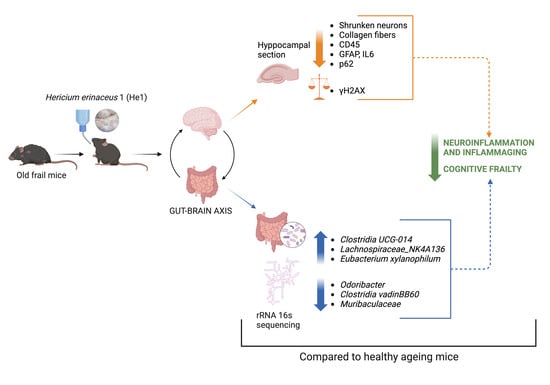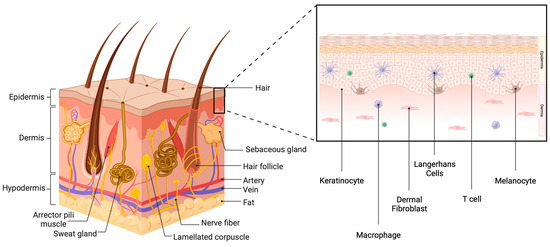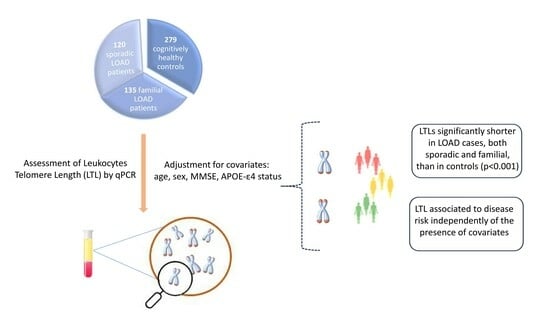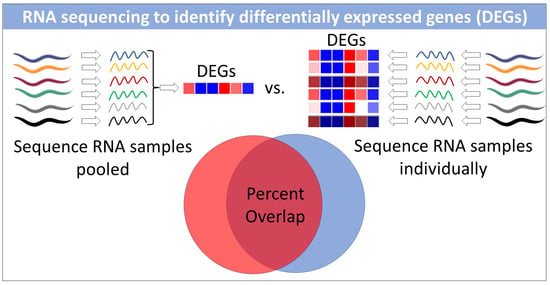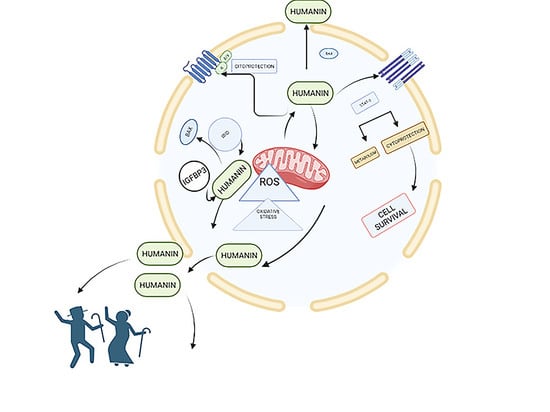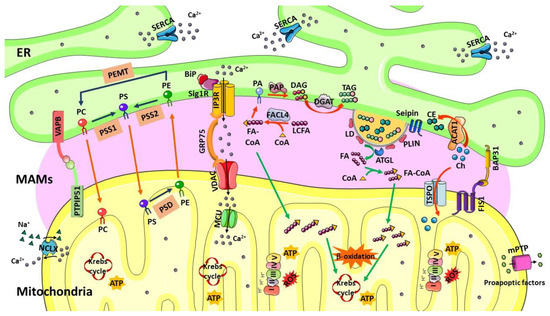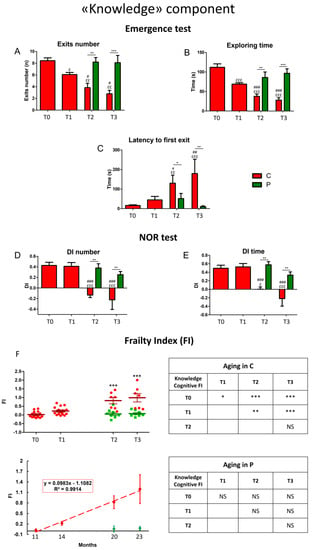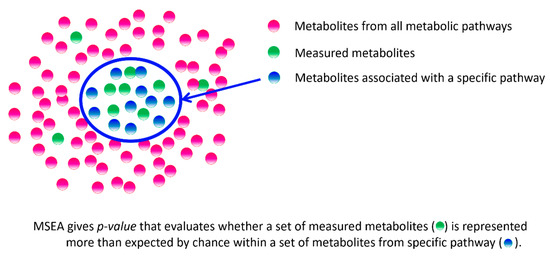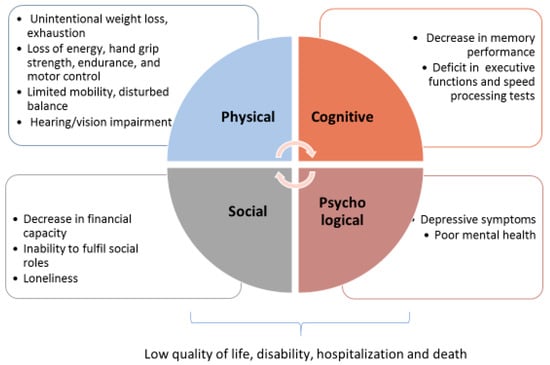Molecular Mechanisms of Aging
A topical collection in Biology (ISSN 2079-7737). This collection belongs to the section "Neuroscience".
Viewed by 47020
Share This Topical Collection
Editors
 Prof. Dr. Giuseppina Rose
Prof. Dr. Giuseppina Rose
 Prof. Dr. Giuseppina Rose
Prof. Dr. Giuseppina Rose
E-Mail
Website
Collection Editor
Department of Biology, Ecology and Earth Sciences, University of Calabria, 87036 Rende, Italy
Interests: genetics of longevity; mitochondrial contribution to aging and age-related diseases; miRNA as markers of aging
Special Issues, Collections and Topics in MDPI journals
 Dr. Paolina Crocco
Dr. Paolina Crocco
 Dr. Paolina Crocco
Dr. Paolina Crocco
E-Mail
Website
Collection Editor
Department of Biology, Ecology and Earth Sciences, University of Calabria, 87036 Rende, Italy
Interests: genetic variability; polymorphisms; aging and longevity; complex traits; telomere; healthy aging; genetic epidemiology; association studies
Special Issues, Collections and Topics in MDPI journals
Topical Collection Information
Dear Colleagues,
Aging is a complex phenomenon characterized by a progressive decrease in biological function and an increased risk of age-related diseases. Breakthroughs in research revealed that the way organisms age depends on networks of conserved molecular mechanisms, regulated by genetic, epigenetic and environmental factors. However, there are still many aspects of the molecular underpinnings of aging which remain to be elucidated. Modern technologies, by integrating knowledge from different layers of information, may help untangle the complexity of this phenotype.
This Topical Collection aims to collect contributions in different fields of study, ranging from cellular and animal models to humans. Knowledge of the most relevant molecular mechanisms influencing the rate of aging may help to better define the tight line dividing healthy from unhealthy aging, and contribute to finding possible interventions for slowing aging in humans.
Authors may submit reviews, short communications and full-size research papers, which cover the aforementioned areas.
Dr. Serena Dato
Prof. Dr. Giuseppina Rose
Dr. Paolina Crocco
Collection Editors
Manuscript Submission Information
Manuscripts should be submitted online at www.mdpi.com by registering and logging in to this website. Once you are registered, click here to go to the submission form. Manuscripts can be submitted until the deadline. All submissions that pass pre-check are peer-reviewed. Accepted papers will be published continuously in the journal (as soon as accepted) and will be listed together on the collection website. Research articles, review articles as well as short communications are invited. For planned papers, a title and short abstract (about 100 words) can be sent to the Editorial Office for announcement on this website.
Submitted manuscripts should not have been published previously, nor be under consideration for publication elsewhere (except conference proceedings papers). All manuscripts are thoroughly refereed through a single-blind peer-review process. A guide for authors and other relevant information for submission of manuscripts is available on the Instructions for Authors page. Biology is an international peer-reviewed open access monthly journal published by MDPI.
Please visit the Instructions for Authors page before submitting a manuscript.
The Article Processing Charge (APC) for publication in this open access journal is 2700 CHF (Swiss Francs).
Submitted papers should be well formatted and use good English. Authors may use MDPI's
English editing service prior to publication or during author revisions.
Keywords
- aging
- health
- networks
- model organism
- human
- molecular interactions
- intervention
Published Papers (9 papers)
Open AccessArticle
Hericium erinaceus Extract Exerts Beneficial Effects on Gut–Neuroinflammaging–Cognitive Axis in Elderly Mice
by
Erica Cecilia Priori, Daniela Ratto, Fabrizio De Luca, Anna Sandionigi, Elena Savino, Francesca Giammello, Marcello Romeo, Federico Brandalise, Elisa Roda and Paola Rossi
Cited by 8 | Viewed by 4371
Abstract
Ageing is a biological phenomenon that determines the impairment of cognitive performances, in particular, affecting memory. Inflammation and cellular senescence are known to be involved in the pathogenesis of cognitive decline. The gut microbiota–brain axis could exert a critical role in influencing brain
[...] Read more.
Ageing is a biological phenomenon that determines the impairment of cognitive performances, in particular, affecting memory. Inflammation and cellular senescence are known to be involved in the pathogenesis of cognitive decline. The gut microbiota–brain axis could exert a critical role in influencing brain homeostasis during ageing, modulating neuroinflammation, and possibly leading to inflammaging. Due to their anti-ageing properties, medicinal mushrooms can be utilised as a resource for developing pharmaceuticals and functional foods. Specifically,
Hericium erinaceus (He), thanks to its bioactive metabolites, exerts numerous healthy beneficial effects, such as reinforcing the immune system, counteracting ageing, and improving cognitive performance. Our previous works demonstrated the capabilities of two months of He1 standardised extract oral supplementation in preventing cognitive decline in elderly frail mice. Herein, we showed that this treatment did not change the overall gut microbiome composition but significantly modified the relative abundance of genera specifically involved in cognition and inflammation. Parallelly, a significant decrease in crucial markers of inflammation and cellular senescence, i.e., CD45, GFAP, IL6, p62, and γH2AX, was demonstrated in the dentate gyrus and
Cornus Ammonis hippocampal areas through immunohistochemical experiments. In summary, we suggested beneficial and anti-inflammatory properties of He1 in mouse hippocampus through the gut microbiome–brain axis modulation.
Full article
►▼
Show Figures
Open AccessEditor’s ChoiceReview
The Skin and Inflamm-Aging
by
Rashi Agrawal, Anne Hu and Wendy B. Bollag
Cited by 31 | Viewed by 9469
Abstract
With its unique anatomical location facing both the external and internal environment, the skin has crucial functions, including shielding the body from damage caused by ultraviolet radiation and chemicals, preventing water loss, acting as a primary barrier against pathogens, participating in metabolic processes
[...] Read more.
With its unique anatomical location facing both the external and internal environment, the skin has crucial functions, including shielding the body from damage caused by ultraviolet radiation and chemicals, preventing water loss, acting as a primary barrier against pathogens, participating in metabolic processes like vitamin D production and temperature control and relaying information to the body through sensory and proprioceptor nerves. Like all organ systems, skin is known to undergo multiple changes with aging. A better understanding of the mechanisms that mediate aging-related skin dysfunction may allow the creation of targeted therapeutics that have beneficial effects not only on aged skin but also on other organs and tissues that experience a loss of or decline in function with aging. The skin is the largest organ of the body and can contribute to serum inflammatory mediator levels. One alteration known to occur with age is an impairment of skin barrier function; since disruption of the barrier is known to induce inflammation, skin may be a major contributor to the sustained, sub-clinical systemic inflammation associated with aging. Such “inflamm-aging” may underlie many of the deleterious changes observed in aged individuals. This review explores the role of age-related skin changes, skin inflammation and inflamm-aging.
Full article
►▼
Show Figures
Open AccessArticle
The Shortening of Leukocyte Telomere Length Contributes to Alzheimer’s Disease: Further Evidence from Late-Onset Familial and Sporadic Cases
by
Paolina Crocco, Francesco De Rango, Serena Dato, Rossella La Grotta, Raffaele Maletta, Amalia Cecilia Bruni, Giuseppe Passarino and Giuseppina Rose
Cited by 6 | Viewed by 2150
Abstract
Telomeres are structures at the ends of eukaryotic chromosomes that help maintain genomic stability. During aging, telomere length gradually shortens, producing short telomeres, which are markers of premature cellular senescence. This may contribute to age-related diseases, including Alzheimer’s disease (AD), and based on
[...] Read more.
Telomeres are structures at the ends of eukaryotic chromosomes that help maintain genomic stability. During aging, telomere length gradually shortens, producing short telomeres, which are markers of premature cellular senescence. This may contribute to age-related diseases, including Alzheimer’s disease (AD), and based on this, several studies have hypothesized that telomere shortening may characterize AD. Current research, however, has been inconclusive regarding the direction of the association between leukocyte telomere length (LTL) and disease risk. We assessed the association between LTL and AD in a retrospective case–control study of a sample of 255 unrelated patients with late-onset AD (LOAD), including 120 sporadic cases and 135 with positive family history for LOAD, and a group of 279 cognitively healthy unrelated controls, who were all from Calabria, a southern Italian region. Following regression analysis, telomeres were found significantly shorter in LOAD cases than in controls (48% and 41% decrease for sporadic and familial cases, respectively;
p < 0.001 for both). Interestingly, LTL was associated with disease risk independently of the presence of conventional risk factors (e.g., age, sex, MMSE scores, and the presence of the APOE-ε4 allele). Altogether, our findings lend support to the notion that LTL shortening may be an indicator of the pathogenesis of LOAD.
Full article
►▼
Show Figures
Open AccessCommunication
RNA Sequencing of Pooled Samples Effectively Identifies Differentially Expressed Genes
by
Bokang Ko and Jeremy M. Van Raamsdonk
Cited by 14 | Viewed by 3267
Abstract
Analysis of gene expression changes across the genome provides a powerful, unbiased tool for gaining insight into molecular mechanisms. We have effectively used RNA sequencing to identify differentially expressed genes in long-lived genetic mutants in
C. elegans to advance our understanding of the
[...] Read more.
Analysis of gene expression changes across the genome provides a powerful, unbiased tool for gaining insight into molecular mechanisms. We have effectively used RNA sequencing to identify differentially expressed genes in long-lived genetic mutants in
C. elegans to advance our understanding of the genetic pathways that control longevity. Although RNA sequencing costs have come down, cost remains a barrier to examining multiple strains and time points with a sufficient number of biological replicates. To circumvent this, we have examined the efficacy of identifying differentially expressed genes by sequencing a pooled RNA sample from long-lived
isp-1 mitochondrial mutant worms. We found that sequencing a pooled RNA sample could effectively identify genes that were found to be significantly upregulated in the two individually sequenced RNA-seq experiments. Finally, we compared the genes significantly upregulated in the two individually sequenced RNA-seq experiments to two previous microarray experiments to come up with a high-confidence list of modulated genes in long-lived
isp-1 mutant worms. Overall, this work demonstrates that RNA sequencing of pooled RNA samples can be used to identify differentially expressed genes.
Full article
►▼
Show Figures
Open AccessSystematic Review
Humanin and Its Pathophysiological Roles in Aging: A Systematic Review
by
Donatella Coradduzza, Antonella Congiargiu, Zhichao Chen, Sara Cruciani, Angelo Zinellu, Ciriaco Carru and Serenella Medici
Cited by 24 | Viewed by 5544
Abstract
Background: Senescence is a cellular aging process in all multicellular organisms. It is characterized by a decline in cellular functions and proliferation, resulting in increased cellular damage and death. These conditions play an essential role in aging and significantly contribute to the development
[...] Read more.
Background: Senescence is a cellular aging process in all multicellular organisms. It is characterized by a decline in cellular functions and proliferation, resulting in increased cellular damage and death. These conditions play an essential role in aging and significantly contribute to the development of age-related complications. Humanin is a mitochondrial-derived peptide (MDP), encoded by mitochondrial DNA, playing a cytoprotective role to preserve mitochondrial function and cell viability under stressful and senescence conditions. For these reasons, humanin can be exploited in strategies aiming to counteract several processes involved in aging, including cardiovascular disease, neurodegeneration, and cancer. Relevance of these conditions to aging and disease: Senescence appears to be involved in the decay in organ and tissue function, it has also been related to the development of age-related diseases, such as cardiovascular conditions, cancer, and diabetes. In particular, senescent cells produce inflammatory cytokines and other pro-inflammatory molecules that can participate to the development of such diseases. Humanin, on the other hand, seems to contrast the development of such conditions, and it is also known to play a role in these diseases by promoting the death of damaged or malfunctioning cells and contributing to the inflammation often associated with them. Both senescence and humanin-related mechanisms are complex processes that have not been fully clarified yet. Further research is needed to thoroughly understand the role of such processes in aging and disease and identify potential interventions to target them in order to prevent or treat age-related conditions. Objectives: This systematic review aims to assess the potential mechanisms underlying the link connecting senescence, humanin, aging, and disease.
Full article
►▼
Show Figures
Open AccessReview
A Perspective on the Link between Mitochondria-Associated Membranes (MAMs) and Lipid Droplets Metabolism in Neurodegenerative Diseases
by
Tânia Fernandes, M. Rosário Domingues, Paula I. Moreira and Cláudia F. Pereira
Cited by 14 | Viewed by 6328
Abstract
Mitochondria interact with the endoplasmic reticulum (ER) through contacts called mitochondria-associated membranes (MAMs), which control several processes, such as the ER stress response, mitochondrial and ER dynamics, inflammation, apoptosis, and autophagy. MAMs represent an important platform for transport of non-vesicular phospholipids and cholesterol.
[...] Read more.
Mitochondria interact with the endoplasmic reticulum (ER) through contacts called mitochondria-associated membranes (MAMs), which control several processes, such as the ER stress response, mitochondrial and ER dynamics, inflammation, apoptosis, and autophagy. MAMs represent an important platform for transport of non-vesicular phospholipids and cholesterol. Therefore, this region is highly enriched in proteins involved in lipid metabolism, including the enzymes that catalyze esterification of cholesterol into cholesteryl esters (CE) and synthesis of triacylglycerols (TAG) from fatty acids (FAs), which are then stored in lipid droplets (LDs). LDs, through contact with other organelles, prevent the toxic consequences of accumulation of unesterified (free) lipids, including lipotoxicity and oxidative stress, and serve as lipid reservoirs that can be used under multiple metabolic and physiological conditions. The LDs break down by autophagy releases of stored lipids for energy production and synthesis of membrane components and other macromolecules. Pathological lipid deposition and autophagy disruption have both been reported to occur in several neurodegenerative diseases, supporting that lipid metabolism alterations are major players in neurodegeneration. In this review, we discuss the current understanding of MAMs structure and function, focusing on their roles in lipid metabolism and the importance of autophagy in LDs metabolism, as well as the changes that occur in neurogenerative diseases.
Full article
►▼
Show Figures
Open AccessArticle
Cognitive Healthy Aging in Mice: Boosting Memory by an Ergothioneine-Rich Hericium erinaceus Primordium Extract
by
Elisa Roda, Fabrizio De Luca, Daniela Ratto, Erica Cecilia Priori, Elena Savino, Maria Grazia Bottone and Paola Rossi
Cited by 19 | Viewed by 6256
Abstract
Brain aging is a crucial risk factor for several neurodegenerative disorders and dementia. The most affected cognitive function is memory, worsening early during aging. Inflammation and oxidative stress are known to have a role in pathogenesis of cognitive impairments, and a link exists
[...] Read more.
Brain aging is a crucial risk factor for several neurodegenerative disorders and dementia. The most affected cognitive function is memory, worsening early during aging. Inflammation and oxidative stress are known to have a role in pathogenesis of cognitive impairments, and a link exists between aging/frailty and immunosenescence/
inflammaging. Based on anti-aging properties, medicinal mushrooms represent a source to develop medicines and functional foods. In particular,
Hericium erinaceus (He) displays several actions ranging from boosting the immune system to fighting senescence, due to its active ingredients/metabolites. Among these, Ergothioneine (ERGO) is known as the longevity vitamin. Currently, we demonstrated the efficacy of an ERGO-rich He primordium extract (He2) in preventing cognitive decline in a murine model of aging. We focused on recognition memory deterioration during aging, monitored through spontaneous behavioral tests assessing both memory components and frailty index. A parallel significant decrease in key markers of inflammation and oxidative stress, i.e., IL6, TGFβ1, GFAP, Nrf2, SOD1, COX2, NOS2, was revealed in the hippocampus by immunohistochemistry, accompanied by an enhancement of NMDAR1and mGluR2, crucially involved in glutamatergic neurotransmission. In summary, we disclosed a selective, preventive and neuroprotective effect of He2 on aged hippocampus, both on recognition memory as well on inflammation/oxidative stress/glutamate receptors expression.
Full article
►▼
Show Figures
Open AccessReview
Metabolome Profiling in Aging Studies
by
Elena E. Balashova, Dmitry L. Maslov, Oxana P. Trifonova, Petr G. Lokhov and Alexander I. Archakov
Cited by 9 | Viewed by 4279
Abstract
Organism aging is closely related to systemic metabolic changes. However, due to the multilevel and network nature of metabolic pathways, it is difficult to understand these connections. Today, scientists are trying to solve this problem using one of the main approaches of metabolomics—untargeted
[...] Read more.
Organism aging is closely related to systemic metabolic changes. However, due to the multilevel and network nature of metabolic pathways, it is difficult to understand these connections. Today, scientists are trying to solve this problem using one of the main approaches of metabolomics—untargeted metabolome profiling. The purpose of this publication is to review metabolomic studies based on such profiling, both in animal models and in humans. This review describes metabolites that vary significantly across age groups and include carbohydrates, amino acids, carnitines, biogenic amines, and lipids. Metabolic pathways associated with the aging process are also shown, including those associated with amino acid, lipid, and energy metabolism. The presented data reveal the mechanisms of aging and can be used as a basis for monitoring biological age and predicting age-related diseases in the early stages of their development.
Full article
►▼
Show Figures
Open AccessReview
Biomarkers of Frailty: miRNAs as Common Signatures of Impairment in Cognitive and Physical Domains
by
Serena Dato, Paolina Crocco, Francesca Iannone, Giuseppe Passarino and Giuseppina Rose
Cited by 7 | Viewed by 3580
Abstract
The past years have seen an increasing concern about frailty, owing to the growing number of elderly people and the major impact of this syndrome on health and social care. The identification of frail people passes through the use of different tests and
[...] Read more.
The past years have seen an increasing concern about frailty, owing to the growing number of elderly people and the major impact of this syndrome on health and social care. The identification of frail people passes through the use of different tests and biomarkers, whose concerted analysis helps to stratify the populations of patients according to their risk profile. However, their efficiency in prognosis and their capability to reflect the multisystemic impairment of frailty is discussed. Recent works propose the use of miRNAs as biological hallmarks of physiological impairment in different organismal districts. Changes in miRNAs expression have been described in biological processes associated with phenotypic outcomes of frailty, opening intriguing possibilities for their use as biomarkers of fragility. Here, with the aim of finding reliable biomarkers of frailty, while considering its complex nature, we revised the current literature on the field, for uncovering miRNAs shared across physical and cognitive frailty domains. By applying in silico analyses, we retrieved the top-ranked shared miRNAs and their targets, finally prioritizing the most significant ones. From this analysis, ten miRNAs emerged which converge into two main biological processes: inflammation and energy homeostasis. Such markers, if validated, may offer promising capabilities for early diagnosis of frailty in the elderly population.
Full article
►▼
Show Figures








